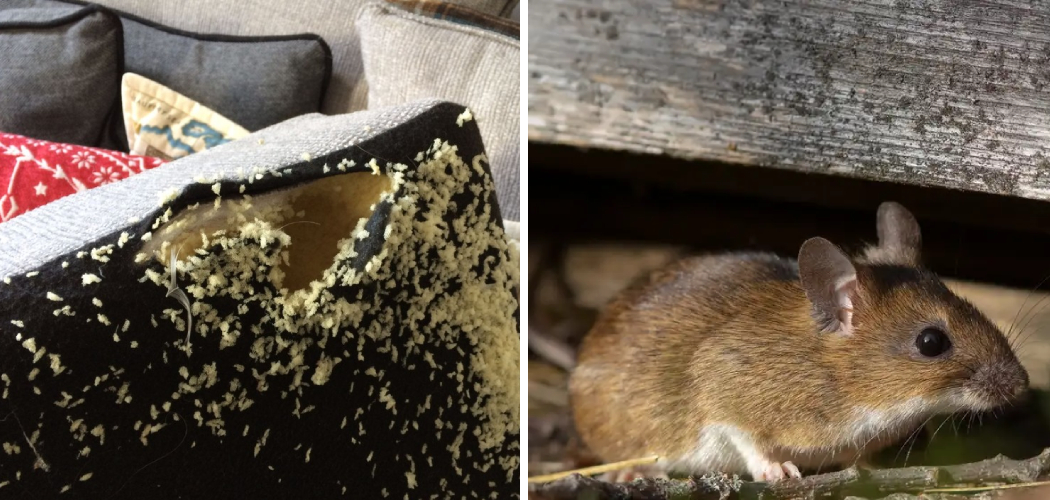Mice are a common household pest that can quickly become a nuisance. They can damage furniture, carpets, and other items in your home by chewing and nesting. If you’re storing furniture in an area exposed to mice, keeping them away and protecting your belongings is important.
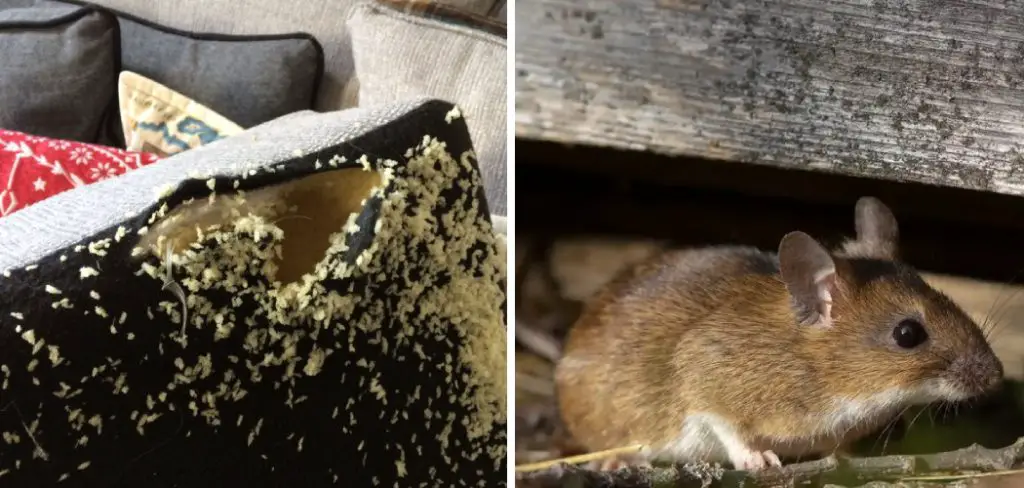
One of the biggest advantages of protecting furniture in storage from mice is that it prevents damage or destruction to your furnishings. Mice can cause considerable damage and leave behind a trail of droppings, so preventing an infestation is essential for appropriately caring for any item you are storing.
Additionally, preventing an infestation also reduces the risks associated with diseases that mice may spread. You can find step-by-step instructions on how to protect furniture in storage from mice in this blog article.
Step-by-Step Processes for How to Protect Furniture in Storage From Mice
Step 1: Inspect the Environment
Before you put your furniture in storage, thoroughly inspect the environment. Look for things like mouse droppings, signs of chewing, and other evidence that mice might be present. If you see any of these signs, it’s important to take action immediately to ensure your furniture is not at risk.
Step 2: Plug Holes or Cracks
If you find any gaps or cracks in the walls, flooring, or storage unit large enough for a mouse to fit through, plug them up with steel wool or another material. This can help prevent mice from entering your furniture storage area and accessing your items.
Setting out traps is one of the most effective ways to eliminate mice. Place a few well-placed traps in your furniture storage area, and check them regularly for signs that they have been triggered.
Step 3: Place Moth Balls or Ammonia
Mothballs and ammonia are great natural repellents for mice. Simply place a few pouches of mothballs or bottles of ammonia around the perimeter of your storage space, and mice should stay away from it. Another natural repellent for mice is peppermint oil. You can buy this in any health food store or online and simply place a few drops around the perimeter of your furniture storage area.
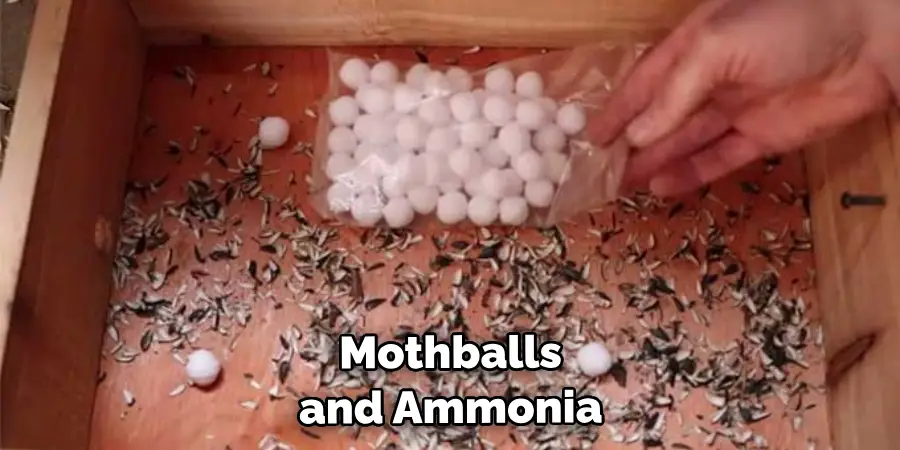
Step 4: Use Mesh or Fencing Around Your Items
If you need extra protection around your furniture, you can use mesh or fencing to keep mice away. This is a great way to ensure that any mice that do manage to enter the storage space won’t be able to get close enough to damage your items. Mice don’t like the smell of citrus, so placing orange or lemon peels around your furniture storage area can help keep them away.
Step 5: Set Up Motion-Activated Lights
Mice are naturally skittish animals and tend to avoid bright lights. Setting up motion-activated lights around your furniture storage area can help deter mice from entering the space and getting close to your items. If you have an infestation of mice in your storage area, setting up bait stations can be a good way to get rid of them. Simply place the bait stations around the perimeter of your storage space, and check them regularly for signs that they are being used.
Step 6: Call an Exterminator
Finally, if you have a severe mouse infestation in your furniture storage area, it might be time to call an exterminator. An exterminator can help identify the source of the problem and get rid of the mice for good.
Following these steps can help keep your furniture safe and secure while in storage and ensure your items stay damage-free. With a little effort, you can protect your furniture from becoming a meal for hungry mice.
Safety Tips For How to Protect Furniture in Storage From Mice
- Place furniture in sealed plastic containers or bags and seal tightly to stop mice from getting inside.
- Use a tight-fitting lid on the container/bag to prevent rodents from entering.
- Ensure that all cracks and crevices are sealed tightly, especially around the edges of storage units.
- Place traps such as glue boards or mouse bait traps around furniture in storage to catch any mice that may have gotten inside.
- Check the storage unit regularly for signs of activity, such as chewed wires or droppings.
- Place moth balls or scented sachets in and around the furniture to deter mice from entering.
- Hire a professional exterminator if there is significant evidence of a mouse infestation.

Following these safety tips can help protect the furniture in storage from being damaged by mice. Taking the necessary steps to prevent rodent infiltration will go a long way in preserving one’s valuable possessions.
How Often Should You Check the Storage Unit for Signs of Mice Activity?
If you are storing furniture in a storage unit, it is important to check it regularly for signs of mice activity. Mice can quickly cause damage to your furniture if left unchecked, so it’s best to inspect the contents of your storage unit every month or two. Look for evidence of rodent droppings, chew marks, and shredded material. If you notice any of these signs, you should protect your furniture and prevent further damage.
You can also set up traps throughout the storage unit to keep mice away. You should use live or electronic traps and check them regularly for any captured rodents. If you capture a mouse, dispose of it humanely by local laws. Finally, ensure you use high-quality pest-prevention products in your storage unit. These products are designed to be applied around the perimeter of the space and provide a safe barrier against mice and other pests. Be sure to follow all labels carefully when using these products.
What Are Some of the Most Effective Methods for Preventing Mice From Entering Your Furniture in Storage?
Fortunately, you can use several simple methods to help protect your furniture in storage from mice. The key is to create an environment that is inhospitable to them and prevents them from entering the area. Here are some of the most effective ways:
- Seal all cracks and crevices around the perimeter of the storage unit with steel wool. Even the smallest opening can be enough for mice to squeeze through.
- Place traps inside the storage unit in areas where you suspect mice activity. This can help catch any that may already have managed to enter and prevent more from entering.
- Use scented mouse repellents or peppermint oil around the perimeter of the storage area to discourage any potential mice from entering.
- Place cedar chips or other natural repellents in small cloth bags and hang them near the storage area entrance. This will deter any potential mice from wanting to enter.
- Keep the storage unit as dry as possible by ensuring there are no water leaks or damp spots that could attract mice looking for a water source.
- Keep food out of the storage unit; this will attract mice and other pests looking for an easy meal.
- Finally, store your furniture off the floor to make it harder for any potential mice to access it. This can help prevent them from chewing on the furniture or nesting inside it.
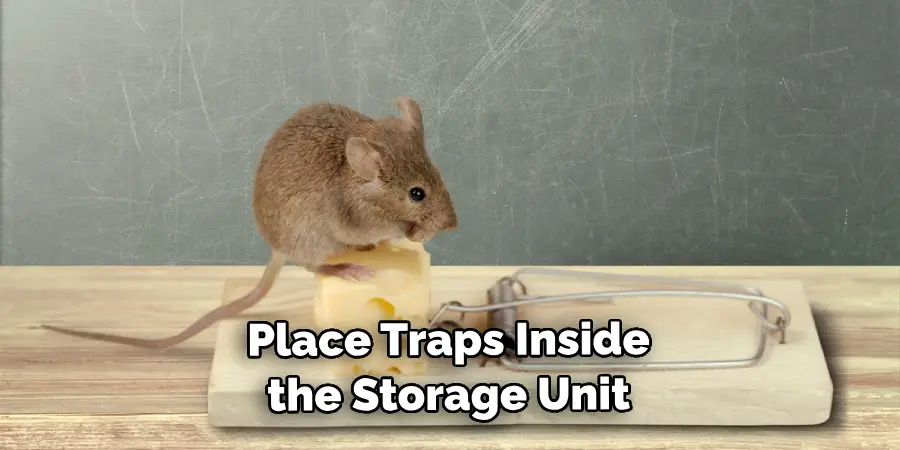
These simple measures can help protect your furniture in storage from mice and other pests. It’s also a good idea to inspect the storage area for signs of pest activity regularly, and if you do spot any, take action to eliminate them as soon as possible.
What Should You Do if You Find Evidence of Mice Infestation in Your Storage Unit?
If you find evidence of mice infestation in your storage unit, the most important thing to do is act quickly. Immediately assess which items in the storage unit have been affected and take the necessary steps to remove the mice. Start by removing all furniture from the storage unit and thoroughly cleaning it. Vacuum up any droppings or other debris that may be present before disposing of it properly.
To prevent future infestations, seal off all cracks and crevices in the unit that mice could use to enter or exit. If possible, install a rodent-proof door on the storage unit. This will help keep out any potential pests from entering in the first place. Use traps to catch any remaining mice in the storage unit—place traps near walls and along the edges of furniture where mice are likely to travel. Make sure to adhere to local regulations when disposing of any trapped animals.
How Often Should You Clean Up the Storage Unit to Prevent Future Infestations?
When it comes to how often you should clean up your storage unit to protect furniture from mice, it depends on the size of the unit and the activity level of rodents in that area. It’s important to regularly inspect for any rodent droppings or evidence of chewing or burrowing around your furniture. If you find any, you’ll want to clean up the area and take steps to prevent future infestation.
The most important thing is to keep your storage unit as free of clutter as possible. Throw away any food or other items that could attract rodents, and ensure that any organic material, like insulation, paper, wood chips, etc., is stored in sealed containers.
Regularly vacuuming out your storage unit can help reduce the risk of a rodent infestation. If you live in an area with a high population of rodents, invest in pest control for your storage unit. Traps, baits, and pesticides are all viable options for keeping mice away from furniture stored inside the unit.
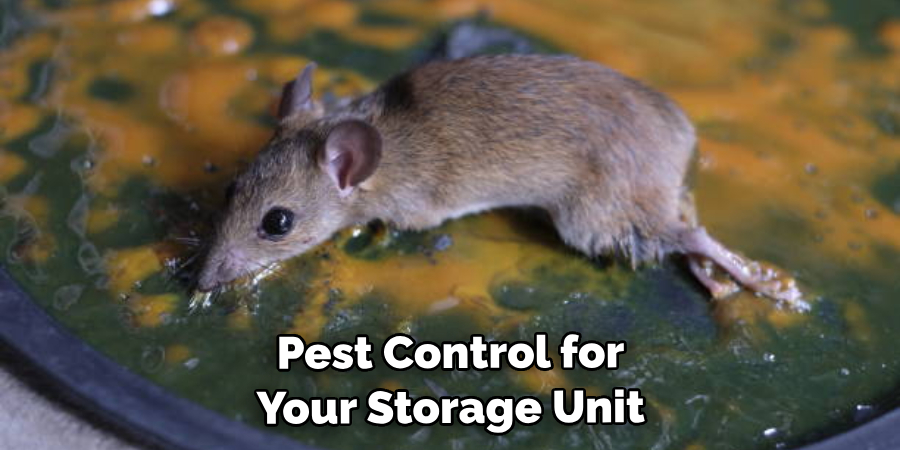
Conclusion
In conclusion, protecting furniture in storage from mice is a multi-faceted process. It starts with a thorough cleaning to make the environment inhospitable for rodents. Then, you need to seal up any entrances or potential points of entry using caulk and steel mesh. Finally, you can apply repellents and use traps or poison if needed.
These steps will ensure your furniture remains safe from mice and other pests while in storage. With the right preventative measures, you won’t have to worry about unwelcome visitors damaging your prized possessions. I hope this article has been beneficial for learning how to protect furniture in storage from mice. Make Sure the preventive measures are followed chronologically.
About
Angela is the chief editor of Indoorense. She began her career as an interior designer before applying her strategic and creative passion to lifestyle and home.
She has close to 15 years of experience in creative writing and online content strategy for housekeeping and cleaning,home decorations as well as other efforts.
She loves her job and has the privilege of working with an extraordinary team. She lives with her husband, two sons, and daughter in Petersburg. When she’s not busy working she spent time with her family.

